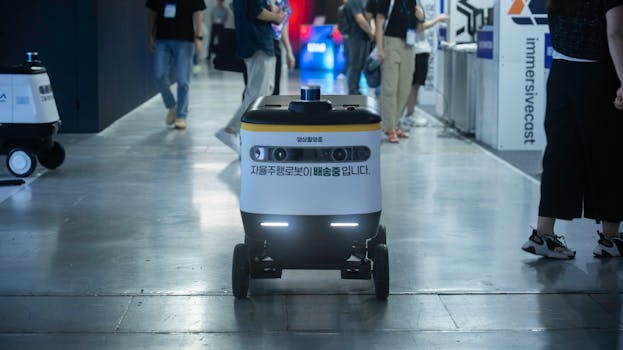Unleashing Efficiency: How Doge AI Tools Revolutionize Government Automation
Introduction
Are you tired of wading through mountains of paperwork, waiting in endless queues, and seeing public services lag behind the pace of modern life? What if there was a way to streamline operations, improve citizen engagement, and unlock unprecedented efficiency within government agencies? The answer might just lie in an unexpected corner of the tech world. Today, we’re diving deep into how Doge AI tools are quietly but powerfully boosting government automation.
For too long, governments have struggled with legacy systems, manual processes, and the sheer volume of data they manage. This leads to delays, inefficiencies, and sometimes, frustration for both public servants and citizens alike. But advancements in artificial intelligence, particularly in specialized tools like those inspired by the adaptable and community-driven spirit of Doge, are offering a fresh, innovative path forward. In this post, you’ll discover what these unique AI tools are, explore their practical applications in public administration, understand the significant benefits they bring, and even look at some potential challenges. Let’s unlock the future of government automation with the power of Doge AI!
Section 1 – What Exactly are Doge AI Tools?
The term “Doge AI tools” might sound quirky, but it represents a broader category of innovative AI solutions that often embody principles like decentralization, community involvement, and rapid, iterative development – traits famously associated with the Dogecoin phenomenon. When we talk about Doge AI tools in the context of government automation, we’re referring to AI-powered platforms and solutions designed to automate, optimize, and enhance various governmental functions.
Think of them as intelligent digital assistants and powerful analytical engines that can handle complex tasks with speed and accuracy far beyond human capabilities. These tools leverage advanced machine learning, natural language processing, and data analytics to understand, process, and act upon vast amounts of information. Their relevance today is paramount, as governments worldwide face increasing demands for transparency, efficiency, and better service delivery, all while managing complex datasets and citizen expectations.

These aren’t just theoretical concepts; they are practical applications being developed and deployed to solve real-world problems. The “Doge” aspect often signifies a more agile, community-oriented approach to AI development, focusing on user-friendliness and accessibility, which can be incredibly beneficial when integrating new technologies into public sector workflows. The goal is to make powerful AI accessible and adaptable, fostering innovation in government automation.
Section 2 – Deep Dive into Doge AI for Government Automation
The potential applications of Doge AI tools in government automation are incredibly diverse, touching nearly every facet of public administration. Let’s explore some key areas where these intelligent systems are making a significant impact:
- Streamlining Citizen Services: From answering frequently asked questions on government websites to processing applications and permits, AI chatbots and virtual assistants can provide instant, 24/7 support. This reduces wait times and frees up human staff for more complex inquiries.
- Enhancing Data Analysis and Decision-Making: Governments collect vast amounts of data. Doge AI tools can analyze this data to identify trends, predict outcomes, and inform policy decisions. For example, analyzing traffic patterns to optimize public transport routes or forecasting resource needs for emergency services. This data-driven approach leads to more effective governance.
- Automating Administrative Tasks: Repetitive tasks like data entry, document sorting, and invoice processing can be fully automated. This increases operational efficiency and reduces the risk of human error.
- Improving Public Safety and Security: AI can be used for anomaly detection in surveillance footage, predicting crime hotspots, and analyzing cybersecurity threats. These applications bolster national security and public well-being.

- Optimizing Resource Management: From managing energy grids to allocating budgets, AI can help governments make smarter decisions about resource allocation, leading to significant cost savings and improved sustainability.
- Facilitating Communication and Engagement: AI-powered sentiment analysis can gauge public opinion on various issues, helping governments understand citizen needs and concerns better. This enhances public trust and fosters more responsive governance.
- Automating Regulatory Compliance: AI can scan documents, monitor activities, and flag potential non-compliance with regulations, making oversight more efficient and effective. This ensures accountability across various sectors.
- Personalizing Public Services: By analyzing citizen data (with appropriate privacy safeguards), AI can help tailor services to individual needs, making interactions with government more relevant and helpful. This improves citizen experience significantly.
The key takeaway is that Doge AI tools offer a flexible and powerful way to tackle these challenges. The emphasis on adaptability means these tools can be fine-tuned to the specific needs of different government departments, ensuring that government automation is not a one-size-fits-all solution but a customized improvement.
Section 3 – Real-World Use Cases and Success Stories
While the concept of Doge AI tools might be new to some, their underlying principles are already driving innovation in government automation. Consider the city of Topeka, Kansas, which famously rebranded itself as “The City of—. I choose to live a life of joy.” This, while not directly an AI implementation, reflects a forward-thinking, community-centric approach that AI can amplify. Imagine if that spirit could be translated into digitally empowered citizen services.
One powerful example is the use of AI-powered chatbots by various municipal governments to handle constituent inquiries. These bots can answer questions about local ordinances, report infrastructure issues (like potholes or broken streetlights), and provide information on public services. This significantly reduces the burden on call centers and provides immediate answers to citizens, enhancing their overall experience.
Another critical area is in fraud detection. Many government agencies, such as tax departments or social security administrations, deal with vast numbers of applications and claims. AI algorithms can be trained to identify suspicious patterns and anomalies that might indicate fraudulent activity, saving taxpayer money and ensuring that resources go to those who truly need them. This is a direct application of government automation that yields tangible results.

Furthermore, consider the potential in public procurement. AI can analyze bids, identify the most cost-effective options, and even predict potential supply chain disruptions, making the procurement process more transparent and efficient. This not only saves money but also ensures fairness and integrity in how public funds are spent.
For a deeper dive into how AI is transforming public services, you might find our Government Digital Service (GDS) in the UK can provide valuable context on government technology adoption.
Pros and Cons of Doge AI Tools in Government Automation
| Pros | Cons |
|---|---|
| ➕ Increased Efficiency and Productivity | ➖ Initial Implementation Costs |
| ➕ Improved Accuracy and Reduced Errors | ➖ Job Displacement Concerns |
| ➕ Enhanced Citizen Services and Engagement | ➖ Data Privacy and Security Risks |
| ➕ Better Data Analysis and Informed Decision-Making | ➖ Need for Skilled Workforce Training |
| ➕ Cost Savings in the Long Run | ➖ Ethical Considerations and Bias |
| ➕ 24/7 Availability of Services | ➖ Resistance to Change and Adoption Challenges |
Conclusion
As we’ve explored, the integration of Doge AI tools offers a compelling pathway to significantly enhance government automation. From revolutionizing citizen interactions and streamlining administrative tasks to empowering data-driven decision-making and improving resource allocation, the benefits are substantial and far-reaching. By embracing these innovative technologies, governments can become more agile, responsive, and effective, ultimately serving their citizens better.
The future of public service is intertwined with intelligent automation. While challenges like implementation costs and the need for skilled personnel exist, the potential for increased efficiency, cost savings, and improved public services makes investing in government automation powered by advanced AI a strategic imperative. Don’t get left behind. It’s time to explore how AI can transform your agency and empower your public servants. Start the conversation today and discover the possibilities!